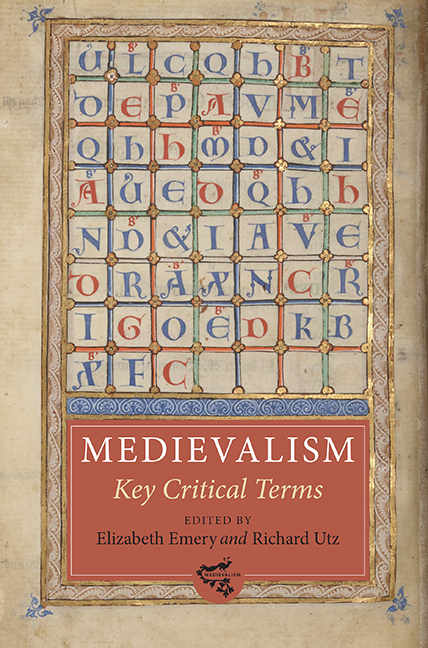Book contents
- Frontmatter
- Dedication
- Contents
- List of Illustrations
- List of Contributors
- Making Medievalism: A Critical Overview
- 1 Archive
- 2 Authenticity
- 3 Authority
- 4 Christianity
- 5 Co-disciplinarity
- 6 Continuity
- 7 Feast
- 8 Genealogy
- 9 Gesture
- 10 Gothic
- 11 Heresy
- 12 Humor
- 13 Lingua
- 14 Love
- 15 Memory
- 16 Middle
- 17 Modernity
- 18 Monument
- 19 Myth
- 20 Play
- 21 Presentism
- 22 Primitive
- 23 Purity
- 24 Reenactment
- 25 Resonance
- 26 Simulacrum
- 27 Spectacle
- 28 Transfer
- 29 Trauma
- 30 Troubadour
- Index
- Medievalism
9 - Gesture
Published online by Cambridge University Press: 08 October 2022
- Frontmatter
- Dedication
- Contents
- List of Illustrations
- List of Contributors
- Making Medievalism: A Critical Overview
- 1 Archive
- 2 Authenticity
- 3 Authority
- 4 Christianity
- 5 Co-disciplinarity
- 6 Continuity
- 7 Feast
- 8 Genealogy
- 9 Gesture
- 10 Gothic
- 11 Heresy
- 12 Humor
- 13 Lingua
- 14 Love
- 15 Memory
- 16 Middle
- 17 Modernity
- 18 Monument
- 19 Myth
- 20 Play
- 21 Presentism
- 22 Primitive
- 23 Purity
- 24 Reenactment
- 25 Resonance
- 26 Simulacrum
- 27 Spectacle
- 28 Transfer
- 29 Trauma
- 30 Troubadour
- Index
- Medievalism
Summary
GESTURES, WHETHER MEDIEVAL or contemporary, formal, ritualistic, or informal, are socially codified movements of body parts or vocalized sounds that, even in a formal setting, can send a uniquely personal message. Consider the smile: that gesture has held different meanings in different times, in different places, for different individuals, within different social situations. Yet, the written description – or drawing – of a damsel smiling in the Middle Ages is understood by contemporary readers. Context is crucial to the meaning of a particular gesture. Consider the medieval romance Sir Gawain and the Green Knight: a damsel smiling at a Christmas party in King Arthur's court holds distinct meaning if that smile is maintained as the Green Knight chops off his head. Outside the context of a literary work full of narrative details, it can be difficult to know a smile's meaning; even within the context of a literary work the lack of description (or even mention) of a gesture constitutes a lack of meaning. Thus, knowing who is gesturing and for what reason(s) is crucial information often lacking in medieval literary, performative, and other artistic works.
The word gesture was apparently first used in the sixteenth century, derived from Anglo-French and Medieval Latin, and referred to little more than a sound and/or bodily movement that had not been formally assigned meaning as part of a language. Jody Enders points out, “[f]rom Greco-Roman antiquity to modern (or even postmodern) literary theory, it has been a cultural commonplace to acknowledge the existence of an entity called ‘body language.’” The term language as used in this context, however, does not refer to the strict linguistic definition of a systemized structure of communication; rather, it refers to a broader, more colloquial, conception of patterned communication. Prior to the late twentieth century, the word gesture was applied to any form of non-verbal expression, including visual-physical expressions that had been systematized into (sign)- languages. Non-verbal languages were not recognized officially as languages until the mid-twentieth century. However, even as the term language has broadened to include systemized gestures, thus leading to significantly less biased appreciation for non-verbal languages, gesture is still recognized as distinct from language. Furthermore, gesturing often drove medieval communication and played a grammatical part in a (yet to be discovered) language system of visual-physical signs and as an emphatic marker of communication.
- Type
- Chapter
- Information
- Medievalism: Key Critical Terms , pp. 79 - 86Publisher: Boydell & BrewerPrint publication year: 2014



